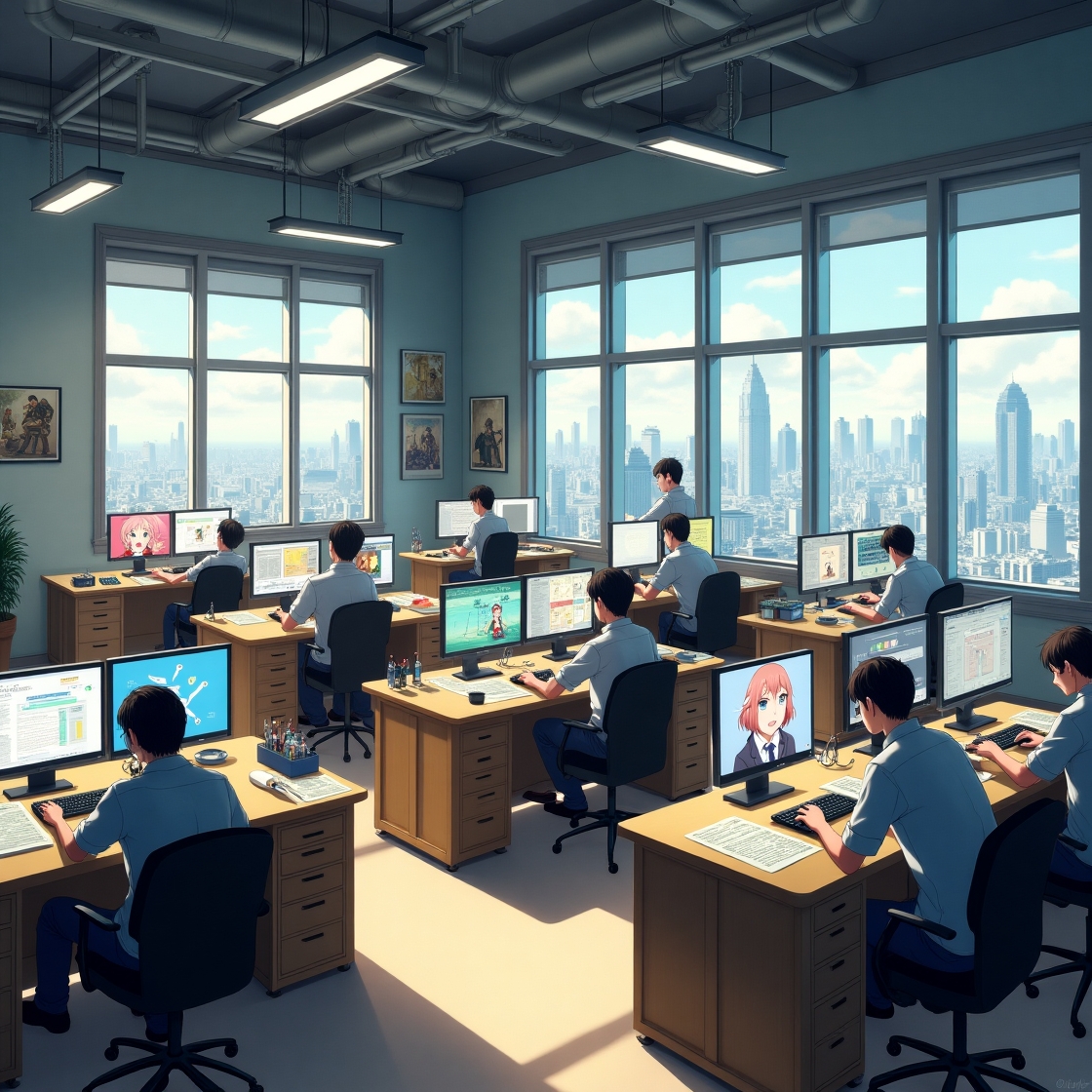So, a production crew is formed, the key members of the crew created scripts, storyboards, and character designs, and production went smoothly — including key animation (genga), in-betweening (douga), backgrounds, coloring, and all the other artistic work. What’s next? Now it’s time for post-production! But what does that involve when it comes to anime? Let’s dive into it!
Compositing in Anime
As we mentioned at the beginning, anime production goes through several stages before reaching the post-production phase. Once everything is ready, the digital compositing team works with all the individual animation elements to create a cohesive final product.
Compositing in anime includes color correction, adding lighting effects, enhancing hand-drawn or 3DCG visual effects, introducing additional camera movements, and other retouching — all aimed at crafting a visually harmonious product that unifies many different elements.
The team’s goal is to make all animation layers and elements appear as though they belong in the same world. For example, if there’s a light source in a scene, all characters and objects must interact with it accordingly. In quality anime, it’s the compositing that helps 3DCG blend seamlessly with 2D animation. Once that’s complete, it’s time for the most crucial step — editing.
Sound Design
While the animation is in production, the sound director typically works with rough cuts to develop a key component that will later be added to the finished animation: all of the anime’s sounds.
This includes all voiceovers, sound effects, and accompanying music or soundtrack. The director guides the voice actors, who usually record their lines separately and later have them edited together.
The sound team also works on creating sound effects that elevate the anime’s quality. Did a tin can fall onto a city street? That sound needs to feel real to strengthen the viewer’s immersion.
Music plays a vital role as well. A good soundtrack can give an anime that extra layer of memorability, and ultimately, the sound director’s job is to ensure that everything fits together smoothly.
Editing in Anime
Whether it’s animation or live-action, editing is an unavoidable step. In anime — as in any film or TV show — the editor brings all the video tracks into non-linear editing software and begins cutting them according to the director’s vision, shaping the anime’s pace.
The editor must be familiar with all stages of the production process, as their work touches everything their teammates have done — both visually and sonically. Once the editor combines all the elements, transitions, and effects, they export the final video file, which then needs approval from the director and producers.
Now the Anime is Ready — What’s Next? Localization
The final step in anime production is localizing it for different languages. Some viewers prefer watching anime in the original language with subtitles, while others enjoy dubbed versions.
When an anime’s production stays on schedule, it’s usually completed several weeks or even months before its release, giving the localization team time to work. A project manager oversees the localization process, assigning a translator to handle the dialogue. Typically, the translator must also be highly proficient with localization software — especially for calculating subtitle timing and translating all on-screen text, which isn’t as common in live-action localization.
Later, their work is reviewed by a QA specialist responsible for verifying the accuracy of the translation and adherence to deadlines.
Dubbing follows a similar process. The dubbing scriptwriter often needs to make adjustments, so the subtitled and dubbed versions aren’t identical — mainly to ensure lip-sync accuracy with the animated mouth movements.




